Buy Halo Wars 2
There were several attempts to bring the RTS genre to consoles, but the original Halo Wars resonated with players the most. Developed by the late Ensemble Studios, the game gave console players the core mechanics of the genre while only watering it down a bit so they wouldn't have to perform controller gymnastics. It also helped that the game was wrapped in a story that greatly expanded the Halo mythos, and the solid campaign was paired with an equally compelling multiplayer component. It has taken eight years, but the series is back with Halo Wars 2 withCreative Assembly at the helm, a developer who's known for the Total War RTS series on the PC.
Those who were familiar with the first game will be immediately at home with the controls for Halo Wars 2. The left stick controls camera panning while the selection cursor is in the middle, much like a typical first-person shooter. The right stick controls camera zoom and rotation. The A button is a basic selector, so you can select one unit with a click or use the "drag and hold" technique to select multiple units. A double-tap of the A button selects all of a specific unit. The right bumper selects all units on-screen, so you don't have to select them one at a time. Though attacks are automatic once an enemy is within range, you can target specific structures or foes and move your selected units to an area. Left trigger uses leader powers in the field, while the d-pad hot-selects things, like your base or points of interest.
Missing from the first game was the ability to create and select groups of your own, and that's been addressed here. After selecting the units you want, a pull of the right trigger and holding a d-pad direction gives you a custom unit group. From there, pulling the right trigger again and tapping on your selected direction gives you immediate access to the group. The obvious limitation is that you can only have four groups at your disposal, so much like the nature of the game itself, the limited number of custom groups makes the game feel a little shallower than a typical PC RTS title. When you consider the input device being used, the compromise works well.
Beyond custom groupings, one of the improvements in the controls is the speed at which your camera moves around the field. In the first game, the camera moved at a very fast pace when you had the analog stick at full tilt. It was great for moving from one end of the map to the other, and while there was some compensation if you wanted to be more precise with your selections, it felt rather squirrelly if you tilted the stick a bit. Here, the camera is slowed down just enough to make movement feel normal, and a full tilt of the stick doesn't feel like the camera is out of control. For those who want the fast speed from before, moving the left stick in conjunction with the left bumper does the trick. Otherwise, it feels like you can be more accurate with your choices now.
The rest of the game adheres to the same mechanics that made the first one a good fit for RTS console players. Bases can only be constructed in specific spots, and attachment buildings are given specific spaces connected to the base. Bases differ between smaller ones, which have one or two extra slots for buildings, and larger ones, which can accommodate at least five attachments and four turrets. Everything from building and leader power choices use a radial design that works well with making quick selections with an analog stick. Each of the menus gives you both unit choices and relevant upgrades, so there isn't much menu juggling to be done.
It works well to create an RTS game on the console's limited control scheme. You lose out on a few things, like faster map travel via clicking a specific map spot or the ability to do automatic unit building via macros, but the spirit of the genre is here and doesn't feel completely neutered. One thing that is bothersome is the method used for recycling buildings. Make the choice to do so, and a large warning appears on-screen to confirm your choice while obscuring the rest of the view in the process. Do it fast enough, and you won't miss much, but a more elegant solution would've been better.
The campaign takes place shortly after the events of Halo 5: Guardians and 28 years after the first Halo Wars. Playing that game first isn't a prerequisite, so you're not missing out on too many details. The crew of the Spirit of Fire has awakened from cryo slumber to find themselves over a Forerunner Ark. While that is a surprise to the crew, the other surprise is in the form of an encrypted UNSC signal coming from the surface of the Ark. After sending a recon team to investigate, they find no one in a research facility except for Isabel, an AI construct who tells of how the base was overrun by Atriox, leader of a group that broke off from the Covenant and calls themselves the Banished. With no assistance from other UNSC ships and no intention to run, the crew chooses to fight back and do what it can to stop the threat.
With the lore, cut scenes and epic sci-fi action feel, Halo Wars 2 hits all of the marks that series fans have come to expect. Much like the campaign of the first game, the missions you undertake are quite varied. In some missions, base building is paramount while in others, you take things on with whatever you can scavenge or have on hand. It feels much like the first game in this respect, where the primary objectives are clearly laid out and easy for anyone with a little RTS experience to complete. The secondary and bonus objectives are tougher to manage, since they're a mix of hunting down optional items and simply avoiding losses, but they're great for gamers who want to boost their mission score and aim for the silver or gold medal. In the end, it works very well for those who aren't too interested in multiplayer.
Having said that, there are a few things that mar this part of the game. For starters, there's no Banished campaign available. One of the things that RTS fans love is that you can play as both factions in their own campaigns, and it is a shame that this game only wants to concentrate on the UNSC side. This is especially disappointing due to the importance given to Atriox by the game's mythos. Having a character that not only openly defies the Covenant but has also proven to be elusive is much more interesting, so it's irksome to see him relegated to just being the villain. It's also a little disappointing to see a few bugs. Some are minor, like the game's inability to remember that you've read some of the lore you've unlocked. Then there's one instance where a campaign mission was still counted as a win even though all of your forces were destroyed.
Multiplayer was a big part of the first title, and the same remains true in Halo Wars 2. Like before, online games can accommodate up to six players per match, and there's a good mix of settings so players can play against one another or team up against the AI. The bad news is that, unlike the original, there's no system link play. Granted, the number of Xbox One players who would want to link together all of that equipment is close to nonexistent, but it is always a shame to see an extra option like that fall by the wayside. The good news is that the online play is rock solid, with no hints of phantom presses, teleporting units, or unresponsive controls. Keep in mind that we were playing the online game without the public involved, but so far, so good.
Various modes are also available in Skirmish if you want to take on the AI by yourself, and they should be familiar to RTS fans and those who indulged in the first Halo Wars. Deathmatch has you building up your forces and trying to destroy your enemy's bases. Domination has you trying to reach a fixed ticket goal by taking over and holding specific territories . Strongholds is a bit of both modes, as you're trying to occupy as many bases as possible and hold on to them until time runs out. One thing that's different from the first game is that the Banished commanders aren't on the ground. All of the Banished leaders play out like UNSC in that you can access their powers but aren't physically on the battlefield. The only exception to this is Decimus, who can be called on as a Hero character from the powers menu.
Despite the inherent enjoyment of the other multiplayer modes, Blitz mode has the most potential to be the focal point. It is similar to Domination in that you're trying to win by taking over territories to reach the given goal. Beyond that, the maps are much smaller, and you can only start scoring if you take over two of the three territories. Only one form of energy is automatically earned, though you can get extra boosts by finding supply drops that periodically occur in the map. Outside of your starting army, which differs depending on the selected leader, you can call upon extra units, which are represented by cards, if you have them in your deck and have enough energy to call upon a card. Once the card is called, it is replaced with a new card, so the hand remains fresh. While you can build your deck out of any cards you want — as long as they're UNSC or Banished — you'll find that some cards are only available to specific leaders.
Blitz succeeds because it mixes deck-building and strategy with a little bit of luck. The pre-game setup is exciting enough since you have to decide whether your strategy warrants loads of weaker units flooding the area or you should hold out for bigger, stronger units to take the field, giving the opponent some points before you hold on to territories for the long haul. There are quite a few possibilities, and the quick nature of the game due to the low point ceiling ensures that you can fit in tons of games in the same amount of time it takes for a normal multiplayer match to conclude.
If you needed proof that Blitz mode is a big deal, look no further than the many opportunities to earn card packs. There are plenty of opportunity for one to earn packs before having to pay for them. You can earn your first three by finishing three tutorials, one of which happens to be for Blitz. Each of the 12 campaign missions gives you a card pack the first time you complete them. You also get card packs for completing challenges, which come in weekly and daily varieties.
The game's finite number of cards and seemingly infinite number of packs will inevitably lead to a player getting repeats. Instead of simply hoarding those duplicates and selling them, the game takes that into account and lets you power up a card if you keep getting extra copies of it. While completionists will aim for the whole collection, those who keep getting the same cards won't be at a disadvantage when constructing their decks.
Governing all of this is a global leveling system that feeds off your single-player and multiplayer experiences. Aside from gaining XP via normal play, both the daily and weekly challenges help you earn bonus XP to level up even faster. In addition to title changes when you level up, you also earn a pack for Blitz mode, giving you more incentive to keep playing if you're addicted to the multiplayer.
Graphically, Halo Wars 2 is quite solid. The camera doesn't swoop in low enough to let you see any details on the units or buildings, but they all look fine from a distance. The different worlds in the series seem fairly homogeneous, so they are consistent with what the series has shown over the years. As with many of the current-generation titles, there's an emphasis on particle effects over polygon count, and their presence is welcome. Best of all, the engine seems to handle loads of different units on-screen simultaneously without any frame rate drops, and quickly panning around the crowded battlefield doesn't make the game hitch at all.
From a sound perspective, the game is well done. Like the visuals, the effects are also authentic to the established Halo experience, so nothing sounds out of place. The voices are also good, though none sound iconic, with the exception of the announcer in Blitz mode. The music does a great job of conveying the grand space opera during cut scenes and pivotal parts of a stage. At other times, it gets out of the way so as not to overpower the other parts.
So far, all of the above has been used to describe the Xbox One version of Halo Wars 2. Since this is a Microsoft-published title, the game falls under the Xbox Play Anywhere program, giving PC players a chance to also check out the title if they're running Windows 10. The first thing to know is that there's no cross-play between the Xbox One and PC iterations, which makes sense since the PC control scheme provides such a huge advantage, such as 10 slots for custom units instead of four. The radial menus are still present, but the mouse makes selecting each option faster. Graphically, the game can hit 60fps quite easily on a Radeon RX 480 with every setting cranked up, and a few extras are present, like better ground texture and most sparks from particle effects. Interestingly, the PC version also lets you play the game with the controller in case you were ever curious.
Halo Wars 2 is a better game thanks to the improvements of the ideas that were established by the first title. Better camera/cursor speed and the addition of custom groupings makes it feel closer to a PC RTS title while still maintaining the ease of control that console players want. The campaign and standard multiplayer modes are solid, while Blitz is a great addition for those looking for quicker RTS matches. While the game is undoubtedly better on a PC, the gameplay and presentation do well on a console — if you can overlook some of the issues mentioned earlier. Halo Wars 2 may be the only RTS game on the platform thus far, but it is a good one that's worth checking out.
Score: 8.0/10
More articles about Halo Wars 2


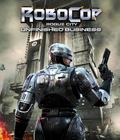


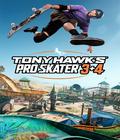


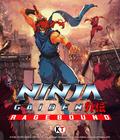
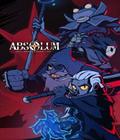

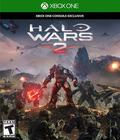 Halo Wars 2 is a strategy game packed with fast-paced action, massive battles, and an all-new Halo story.
Halo Wars 2 is a strategy game packed with fast-paced action, massive battles, and an all-new Halo story.







































